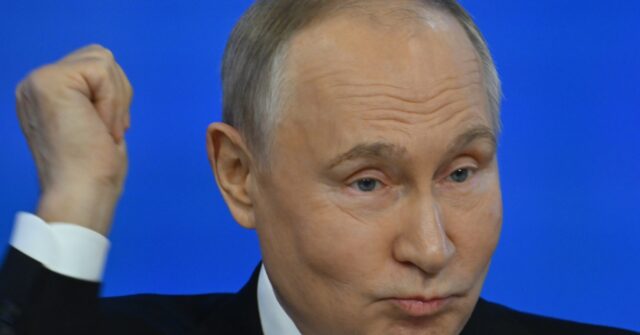In a recent press conference, Russian President Vladimir Putin confidently asserted that Russia had successfully fulfilled its strategic objectives in Syria, despite the apparent collapse of its ally Bashar Assad’s regime, which has now relocated to Moscow. This assertion came during his extensive end-of-year address that spanned almost five hours, where he discussed several pressing issues, including Russia’s military involvement in Syria, the ongoing conflict in Ukraine, and domestic challenges related to low birth rates. Following a halt in his yearly press conferences due to the invasion of Ukraine, this conspicuous return addressed both domestic and international audiences, reflecting on Russia’s longstanding commitment to maintaining stability in Syria.
Putin emphasized that Russia’s intervention in Syria, which began a decade ago, aimed primarily at preventing the emergence of a terrorist stronghold similar to those seen in other conflict zones. He insisted that Moscow’s involvement had been successful in thwarting such developments. As evidence, he cited the evolution of former opposition groups, suggesting a shift away from extremist ideologies. His comments hinted at a complex landscape where various factions, including the al-Qaeda affiliate, Hayat Tahrir al-Sham (HTS), have adapted amid the conflict. Putin’s portrayal underscored the narrative that despite Assad’s regime faltering, Russia remains steadfast in its mission to stabilize the region and deter terrorism.
The situation in Syria has been marked by an intricate civil war and has involved numerous militias and state actors since the onset of widespread protests in 2011. HTS, currently led by Ahmed al-Sharaa, has claimed significant territory, including a surprise takeover of Aleppo, forcing Assad to flee to Russia. Putin’s remarks seemed to highlight a potential shift in international dynamics, as he noted the growing interest from European countries and the United States in engaging with HTS, challenging its terrorist designations. This strategic recalibration suggests that the international community may be redefining alliances, further complicating the geopolitical landscape in the region.
Following Assad’s departure, conflicting narratives emerged regarding the circumstances of his exit, with Putin claiming it was a voluntary decision while an alleged letter from Assad implied he was coerced. This confusion illustrated the complex relationship between the two leaders, with Putin acknowledging his forthcoming meeting with Assad, where he intends to address various pressing issues, including the status of Austin Tice, an American journalist missing in Syria since 2012. Putin’s remarks suggest a nuanced understanding of the multifaceted Syrian conflict and an awareness of the intricate domestic and international pressures at play.
As discussions about Russia’s future role in Syria continue, Putin articulated a desire to sustain Russia’s military presence while adapting to the needs of the host country. This suggests a potential pivot towards a more humanitarian-focused role, utilizing military facilities for aid distribution to war-affected regions. Such an approach illustrates an intention to reshape Russia’s engagement in Syria from purely military objectives to a broader humanitarian mandate, possibly in an attempt to enhance its international image and foster goodwill among the Syrian populace.
In summary, Putin’s press conference offered critical insights into Russia’s strategic outlook in Syria amidst the ongoing turmoil. Despite facing significant challenges with Assad’s regime now in disarray, Putin conveyed a sense of optimism about achieving broader anti-terrorism goals and maintaining Russia’s geopolitical influence. This complex interplay between military objectives, humanitarian efforts, and shifting international relations underscores the evolving dynamics in Syria, which will undoubtedly continue to influence Russia’s foreign policy decisions in the foreseeable future.

